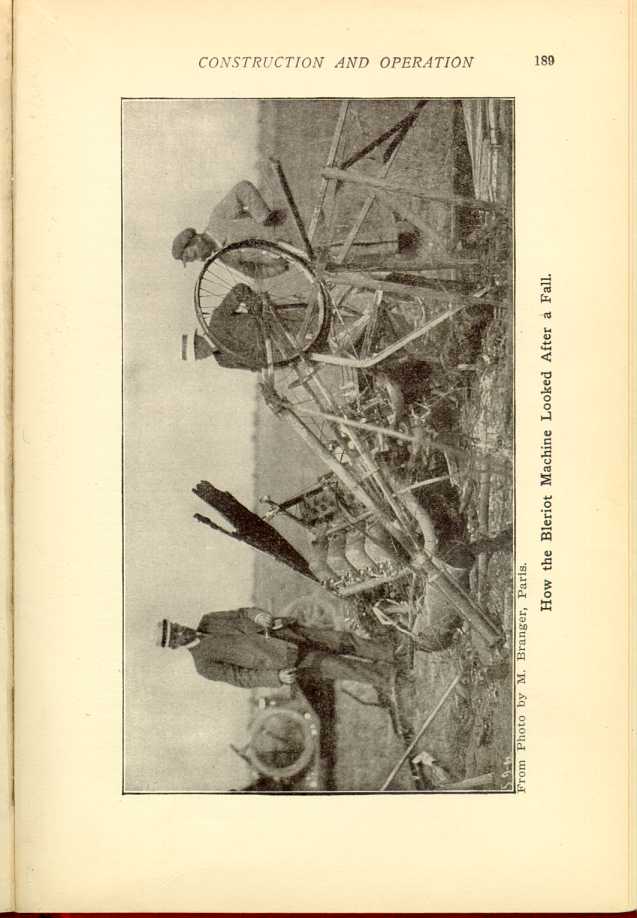Requisites for Soaring Flights.
The following are deemed to be the requisites and maneuvers to master the secrets of soaring flight:
1st—Develop a dynamic flying machine weighing about one pound per square foot of area, with stable equilibrium and under perfect control, capable of gliding by gravity at angles of one in ten (5 3/4°) in still air.
2nd.—Select locations where soaring birds abound and occasions where rising trends of gentle winds are frequent and to be relied on.
3rd.—Obtain an initial velocity of at least 25 feet per second before attempting to soar.
4th.—So locate the center of gravity that the apparatus shall assume a negative angle, fore and aft, of about 3°.

From Photo by M. Branger, Paris
How the Bleriot Machine Looked After a Fall.
[Description: Black and white illustration: Three men stand around wrecked
aeroplane.]
5th.—Circle like the bird. Simultaneously with the steering, incline the apparatus to the side toward which it is desired to turn, so that the centrifugal force shall be balanced by the centripetal force. The amount of the required inclination depends upon the speed and on the radius of the circle swept over.
6th.—Rise spirally like the bird. Steer with the horizontal rudder, so as to descend slightly when going with the wind and to ascend when going against the wind. The bird circles over one spot because the rising trends of wind are generally confined to small areas or local chimneys, as pointed out by Sir H. Maxim and others.
7th.—Once altitude is gained, progress may be made in any direction by gliding downward by gravity.
The bird's flying apparatus and skill are as yet infinitely superior to those of man, but there are indications that within a few years the latter may evolve more accurately proportioned apparatus and obtain absolute control over it.
It is hoped, therefore, that if there be found no radical error in the above computations, they will carry the conviction that soaring flight is not inaccessible to man, as it promises great economies of motive power in favorable localities of rising winds.
The writer will be grateful to experts who may point out any mistake committed in data or calculations, and will furnish additional information to any aviator who may wish to attempt the feat of soaring.